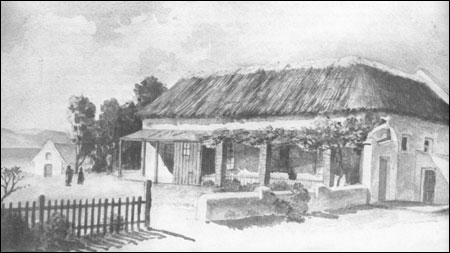| Treaty Park - Site of Treaty of 1806, Woodstock

In Spring Street, Woodstock , on the Table Mountain side of the railway line there is a small square surrounded by buildings and shaded by a gnarled old milkwood tree. This site and the tree are historically related to the second British occupation of the Cape in 1806.
In 1803 England who had occupied the Cape Colony for seven years, gave it back to the Netherlands which was then known as the Batavian Republic . General J. W. Janssens was appointed as governor. Barely three years later England again sent a fleet to occupy the Cape . This fleet anchored off Blaauwberg Strand and on 8th January 1806, General Janssens' weak garrison was decisively defeated at the Battle of Blaauwberg. He withdrew with the remainder of his force to the Hottentots Holland Mountains .
On 10th January, 1806 , Cape Town capitulated to the British commanders at this site in Woodstock , then known as Papendorp. The articles of capitulation were signed at a thatched house that stood alongside the square. By this instrument Lt.-Col. von Prophalov,
the commander of the local defences, transferred the property of the Batavian government at the Cape to the British commanders, Maj.-Gen. Sir David Baird and Commodore Home Popham.
The so-called “Treaty House” stood for many years but was demolished in about 1935 to make way for a factory. Meanwhile a persistent tradition arose that the treaty was signed under which consequently became known as the “Treaty Tree”. Fortunately the site on which the tree stands stood as derelict land'' without an owner for about a century. In 1966 the City Council of Cape Town obtained possession of it. This enabled the Council to preserve it in commemoration of one of the most important events in the history of
South Africa .
Proclaimed as a National Monument in1967
|